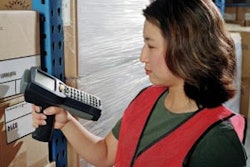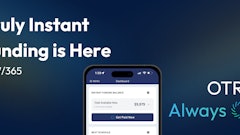Profiles in Supply Chain Enablement: When A/R stands for competitive advantage - Office Depot takes its accounts receivable processes online
Company: Office Depot (Boca Raton, FL)
Company Size: Large
Company Sector: Non-manufacturing (Office Supplies Retailer)
Area(s) of Enablement: Payment
Enabler: Avolent, Inc. (San Francisco, CA)
 Case Study: Companies with multiple product lines or subsidiaries, or enterprises that have gone through repeated acquisitions, frequently confront the challenge of creating a unified customer experience, particularly around how they bill their clients, since merging, replacing or upgrading disparate legacy financial, billing and customer systems can be an expensive, lengthy process.
Case Study: Companies with multiple product lines or subsidiaries, or enterprises that have gone through repeated acquisitions, frequently confront the challenge of creating a unified customer experience, particularly around how they bill their clients, since merging, replacing or upgrading disparate legacy financial, billing and customer systems can be an expensive, lengthy process.
Such was the dilemma facing Delray Beach, Fla.-based Office Depot, the $14 billion office supplies company. In addition to its retail outlets, Office Depot operates an online B2B network that serves business customers who generate some 1.5 million transactions and more than 100,000 invoices monthly. As part of its growth strategy, Office Depot has been acquiring new companies and product lines, but with each acquisition, Office Depot had to incorporate the legacy billing systems and financial procedures from these entities into its existing online experience.
With the promise of more acquisitions to come, Office Depot needed a strategy to keep its customer experience intact while minimizing the costs of replacing or upgrading back-end systems. Jan Gallagher, director of customer account system operations with Office Depot, says that from the start, the company viewed this project as an opportunity to gain a competitive advantage. "Pencils, pens and paper actually can only become so exciting, so we wanted to give the sales force an edge when they're talking with clients," she says. Giving customers the opportunity to view all their office supplies billing and procurement information online, alleviating them of the need to get on the phone with a customer service rep and freeing them of the tyranny of paper invoices, seemed like just the ticket.
Moving Toward e-Billing
Beginning in the summer of 2001, Office Depot reviewed an assortment of options to address this challenge, including offerings from various payment solution providers and financial institutions, before settling on an application from an enabler called Avolent. Founded in 1995 and based in San Francisco, Avolent offers solutions for e-billing and cash-flow optimization, with the goals of giving large enterprises visibility into, and control over, their inbound cash flow. Gallagher says that the solution provider particularly impressed Office Depot with its willingness to invest the time necessary to understand the complexities of the office supplier's business.
For its implementation, Office Depot selected Avolent's BizCast e-billing application. Using the application's visual data mapping tool and suite of adapters to back-end systems, Office Depot figured it would be able to take feeds from all the appropriate back-end systems and provide its customers with the ability to view and pay consolidated bills online, and also allow the company's own finance team to reconcile the transaction activity back to the appropriate back-end system, with an electronic invoice automatched to proof of delivery.
The company initiated a pilot project with the BizCast application in December 2001, rolling out the solution to a set of 36 customers. During the pilot, the solution allowed both the customers and Office Depot's own sales reps to go into the application online and review invoices and accounts receivable information, print or e-mail invoices, look at usage reports and do other simple reporting. Importantly, Gallagher and her team initiated a marketing campaign to promote awareness of the system and its capabilities, both internally with the Office Depot sales force and externally with the company's customers. "We felt that if our customers and our sales force loved it, then we would be comfortable in rolling it out in our entire customer base," explains Gallagher.
By February 2003, the company was sufficiently satisfied with the results of the pilot that it opted to roll out the offering across its broader customer base. Once again, customers and company staff could go into the system to check, e-mail and print invoices, as well as look at usage reporting and do other simple reporting around purchases from Office Depot. This phase two of the implementation has continued on an ongoing basis as increasing numbers of customers have signed onto the system, and Gallagher says that to date the adoption rate among Office Depot's customers has reached 37 percent.
Cost Effective for Customers, Too
Gallagher did not discuss the cost of the project, but she did say that Charles Brown, Office Depot's chief financial officer at the time the project was initiated (and currently president of the company's international business), required extremely rigorous return on investment documentation for any project. As a result, Office Depot calculated that it achieved payback on the project within 18 months, based on hard cost savings.
Now Office Depot has entered a third phase of the rollout, launching functionality that will allow customers to pay invoices online via automated clearing house (ACH) or a credit or purchasing card. New capabilities also will allow customers to e-mail and fax invoices from within the system, and Office Depot will be able to "e-notify" customers when their invoices are ready to be viewed and paid. Looking forward, Office Depot is planning to use the Avolent solution to pull in data from the billing systems of Tech Depot, a sister company that offers information technology equipment and components, and provide shared customers with a single view of their total spend with the two businesses.
Perhaps the biggest ROI on the project for Office Depot so far, according to Gallagher, has been the benefits that have accrued to the company's customers. "This [system] allows the customer not only to view all their information without actually having to get on the phone with someone but also to reduce costs on their side," Gallagher says. "They don't have the labor as far as opening invoices, going through their mail room, losing the paper, making the phone call, so it becomes very cost effective for them as well."
For more stories of successful supply chain implementation, read the "2005 Supply & Demand Chain Executive 100" article in the June/July 2005 issue of the magazine. Also watch the Today's Headlines section of SDCExec.com every Tuesday and Thursday for more in depth best practices drawn from this year's Supply & Demand Chain Executive 100.
Company: Office Depot (Boca Raton, FL)
Company Size: Large
Company Sector: Non-manufacturing (Office Supplies Retailer)
Area(s) of Enablement: Payment
Enabler: Avolent, Inc. (San Francisco, CA)
 Case Study: Companies with multiple product lines or subsidiaries, or enterprises that have gone through repeated acquisitions, frequently confront the challenge of creating a unified customer experience, particularly around how they bill their clients, since merging, replacing or upgrading disparate legacy financial, billing and customer systems can be an expensive, lengthy process.
Case Study: Companies with multiple product lines or subsidiaries, or enterprises that have gone through repeated acquisitions, frequently confront the challenge of creating a unified customer experience, particularly around how they bill their clients, since merging, replacing or upgrading disparate legacy financial, billing and customer systems can be an expensive, lengthy process.Such was the dilemma facing Delray Beach, Fla.-based Office Depot, the $14 billion office supplies company. In addition to its retail outlets, Office Depot operates an online B2B network that serves business customers who generate some 1.5 million transactions and more than 100,000 invoices monthly. As part of its growth strategy, Office Depot has been acquiring new companies and product lines, but with each acquisition, Office Depot had to incorporate the legacy billing systems and financial procedures from these entities into its existing online experience.
With the promise of more acquisitions to come, Office Depot needed a strategy to keep its customer experience intact while minimizing the costs of replacing or upgrading back-end systems. Jan Gallagher, director of customer account system operations with Office Depot, says that from the start, the company viewed this project as an opportunity to gain a competitive advantage. "Pencils, pens and paper actually can only become so exciting, so we wanted to give the sales force an edge when they're talking with clients," she says. Giving customers the opportunity to view all their office supplies billing and procurement information online, alleviating them of the need to get on the phone with a customer service rep and freeing them of the tyranny of paper invoices, seemed like just the ticket.
Moving Toward e-Billing
Beginning in the summer of 2001, Office Depot reviewed an assortment of options to address this challenge, including offerings from various payment solution providers and financial institutions, before settling on an application from an enabler called Avolent. Founded in 1995 and based in San Francisco, Avolent offers solutions for e-billing and cash-flow optimization, with the goals of giving large enterprises visibility into, and control over, their inbound cash flow. Gallagher says that the solution provider particularly impressed Office Depot with its willingness to invest the time necessary to understand the complexities of the office supplier's business.
For its implementation, Office Depot selected Avolent's BizCast e-billing application. Using the application's visual data mapping tool and suite of adapters to back-end systems, Office Depot figured it would be able to take feeds from all the appropriate back-end systems and provide its customers with the ability to view and pay consolidated bills online, and also allow the company's own finance team to reconcile the transaction activity back to the appropriate back-end system, with an electronic invoice automatched to proof of delivery.
The company initiated a pilot project with the BizCast application in December 2001, rolling out the solution to a set of 36 customers. During the pilot, the solution allowed both the customers and Office Depot's own sales reps to go into the application online and review invoices and accounts receivable information, print or e-mail invoices, look at usage reports and do other simple reporting. Importantly, Gallagher and her team initiated a marketing campaign to promote awareness of the system and its capabilities, both internally with the Office Depot sales force and externally with the company's customers. "We felt that if our customers and our sales force loved it, then we would be comfortable in rolling it out in our entire customer base," explains Gallagher.
By February 2003, the company was sufficiently satisfied with the results of the pilot that it opted to roll out the offering across its broader customer base. Once again, customers and company staff could go into the system to check, e-mail and print invoices, as well as look at usage reporting and do other simple reporting around purchases from Office Depot. This phase two of the implementation has continued on an ongoing basis as increasing numbers of customers have signed onto the system, and Gallagher says that to date the adoption rate among Office Depot's customers has reached 37 percent.
Cost Effective for Customers, Too
Gallagher did not discuss the cost of the project, but she did say that Charles Brown, Office Depot's chief financial officer at the time the project was initiated (and currently president of the company's international business), required extremely rigorous return on investment documentation for any project. As a result, Office Depot calculated that it achieved payback on the project within 18 months, based on hard cost savings.
Now Office Depot has entered a third phase of the rollout, launching functionality that will allow customers to pay invoices online via automated clearing house (ACH) or a credit or purchasing card. New capabilities also will allow customers to e-mail and fax invoices from within the system, and Office Depot will be able to "e-notify" customers when their invoices are ready to be viewed and paid. Looking forward, Office Depot is planning to use the Avolent solution to pull in data from the billing systems of Tech Depot, a sister company that offers information technology equipment and components, and provide shared customers with a single view of their total spend with the two businesses.
Perhaps the biggest ROI on the project for Office Depot so far, according to Gallagher, has been the benefits that have accrued to the company's customers. "This [system] allows the customer not only to view all their information without actually having to get on the phone with someone but also to reduce costs on their side," Gallagher says. "They don't have the labor as far as opening invoices, going through their mail room, losing the paper, making the phone call, so it becomes very cost effective for them as well."
For more stories of successful supply chain implementation, read the "2005 Supply & Demand Chain Executive 100" article in the June/July 2005 issue of the magazine. Also watch the Today's Headlines section of SDCExec.com every Tuesday and Thursday for more in depth best practices drawn from this year's Supply & Demand Chain Executive 100.



















